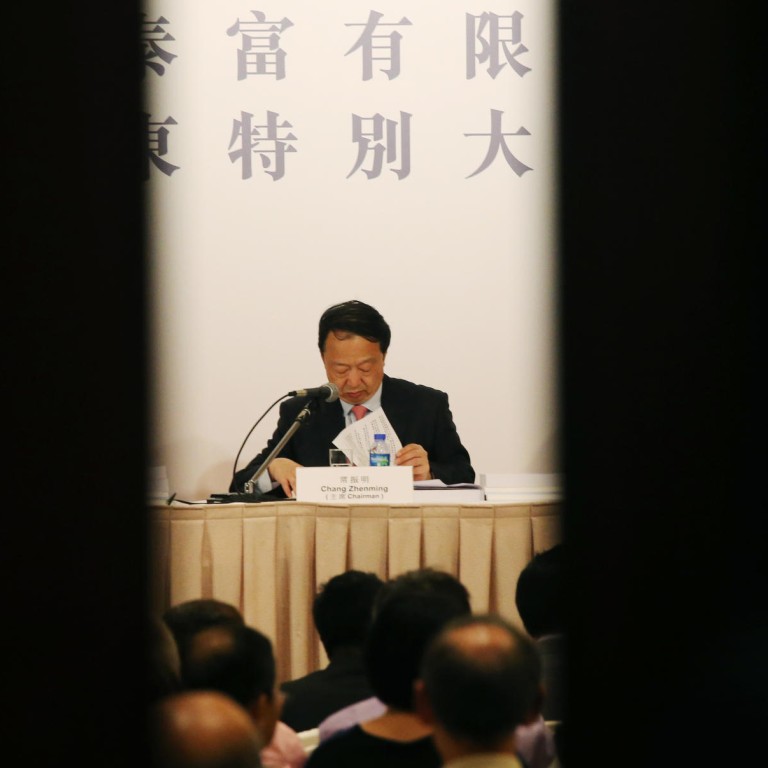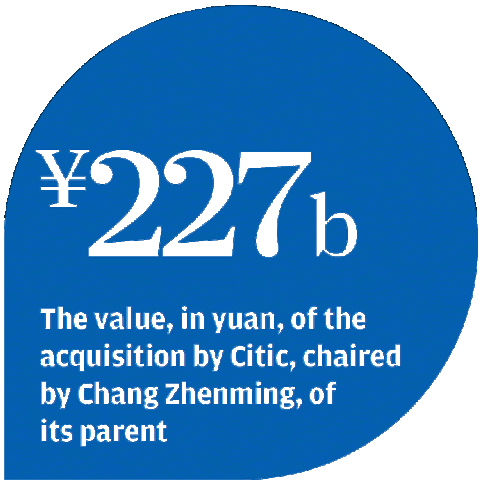
Citic still crucial to mainland China reforms
Citic has not seen its role as the central government's first and one of the most important overseas investment vehicles diminish, despite huge losses from foreign exchange bets and a much-delayed and over-budgeted Australian iron ore project.
Citic has not seen its role as the central government's first and one of the most important overseas investment vehicles diminish, despite huge losses from foreign exchange bets and a much-delayed and over-budgeted Australian iron ore project.

The firm, which went public in Hong Kong 24 years ago through a reverse takeover deal, was a "window company" for Beijing, with a mission to tap overseas capital markets to fund the development of the mainland economy and the reform of the businesses which were previously run inefficiently under state planning.
It has adopted a conglomerate model of development, dipping into a wide array of businesses both in Hong Kong and on the mainland, spanning property, aviation, power generation, telecommunications, vehicle and consumer goods trading and specialised steel production.
In late 2007, it announced a venture into a greenfield iron ore mining project in Western Australia state, in a diversification that was thought to be lucrative with lofty iron ore prices at the time, which would also help mainland steel mills break the supply stranglehold of Australian mining giants BHP Billiton and Rio Tinto.
But the project's budget has ballooned from US$1.75 billion in 2007 to more than US$10 billion due to surging costs of material, labour and management, the rising Australian dollar, expanded project scope and misjudgment of the amount of mainland workers its contractor Metallurgical Corp of China would be allowed to deploy in the country.
To hedge its foreign exchange risk, Citic entered into hedging contracts, but their complex and high-risk nature saw its exposure balloon from A$500 million to A$9 billion as the Australian currency sank amid the global financial crisis in 2008, without a cap.
This resulted in an unrealised loss of HK$15.5 billion, which drew criticism after the company delayed the announcement on those losses by six weeks.
By selling 60 per cent of its high-risk foreign exchange exposure to its parent for HK$9.3 billion in late 2008 and through a recent 227 billion yuan acquisition deal with its parent Citic Group, it has capped the loss and substantially diluted the troubled iron ore project's importance in its financial statements.
For its parent, by assuming the risky exposure at a time when the Australian dollar was trading close to its lowest in the past decade, it has likely reaped substantial gains, with the currency rising from the agreed price of 70 US cents to as much as above parity against the greenback.
This year, Chang has taken advantage of Beijing's call for state enterprises to deepen their reform by listing more of their assets on stock markets and by co-investing with private investors, so that they are subject to more external scrutiny and governance and become more market-oriented in their operation.
After the mega acquisition deal, some 99 per cent of Citic Group's assets are owned by Citic, but its assets' composition saw a dramatic change.
Before the deal, iron ore mining and special steel manufacturing accounted for 83 per cent of Citic's net assets, and recorded a combined net loss of HK$87 million in this year's first half.
After its completion, financial services - mainly held by listed Citic Bank and Citic Securities - account for about 75 per cent of Citic's assets and 79 per cent of its earnings, according to a Citi research report.
Iron ore mining used to account for 39 per cent of its assets and threatened the firm's solvency. Now it represents around 2 per cent of its asset value, it said.
Despite Citic's drastic makeover, some analysts are not convinced it represents a good investment.
"We are of the view that investors lack a compelling reason to invest in Citic … investors would be better off investing in Citic's listed subsidiaries directly or other listed companies to gain direct exposure to the industries they prefer," Citi's analysts said in a research report on September 1.
They said the company was trading at an 8 per cent discount to their estimated net asset value for next year, compared to a 31 per cent average in other conglomerates.
"Some investors view Citic as the pilot for state enterprise reform and believe it will be an active participant - hopefully value could be unlocked via spin-offs and net asset value could grow through acquisitions," the report said. "However, given Citic's huge market capitalisation, it will be difficult to find sizeable, value-enhancing transactions."
Given 60 per cent of Citic's estimated net asset value is already separately listed, it will see limited valuation appreciation if its unlisted assets are spun off, they added.

